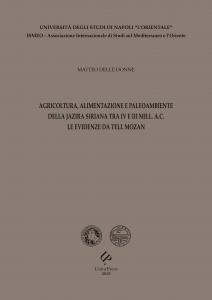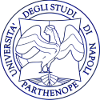Agricoltura, alimentazione e paleoambiente della Jazira siriana tra IV e III mill. a.C. Le evidenze da Tell Mozan
Keywords:
plant remains, Khabur Triangle, Late Chalcolithic 3, Early Jazirah IVSynopsis

Publisher: UniorPress
Series: Dissertationes
ISSN: 1723-8226
Pages: 280
Language: Italian
NBN: http://nbn.depositolegale.it/urn:nbn:it:unina-28280
Abstract: The volume presents new information about the peculiar relationship between the ancient communities settled the Upper Khabur region, in northern Syria and their own environment. In order to achieve this goal, an interdisciplinary approach has been adopted, which has shed light on the evolution of the plant world, through the study of the archaeological plant remains from the excavation carried out at the site of Tell Mozan, under the auspice of IIMAS – The International Institute of Mesopotamian Area Studies by Giorgio Buccellati and Marilyn Kelly-Buccellati. The samples here investigated belong to two different chronological periods, Late Chalcolithic 3 (the first half of the 4th millennium BC) and Early Jazira IV (the second half of the 3rd millennium BC).
The carpological record is mainly made up of mostly fragmentary cereal grains, few spike and spikelet remains, a large number of weeds, especially of graminaceous family, and, in a smaller amount, of leguminous family and of other families. Crops are characterized by whole and fragmentary grains and by few spike remains of barley, einkorn, emmer, and free threshing wheat. The pulse remains, mainly lentil, and fruit remains are far fewer and among the latter grapevine remains from 3rd millennium BC levels are remarkable. Weeds were found in all samples in high percentages; among the most representative families, the graminaceous family (Poaceae) is to be noticed, in particular Aegilops. Leguminous weeds (Fabaceae) and other weed families have been found in lower percentages.
According to ethnographic studies of various cereal-processing stages, plant complex from 4th millennium BC levels may be related to threshing waste, while that from 3rd millennium BC levels may be linked to a final phase of processing, between the fine sieving of grains and their first storage. This product, retrieved from the area identified as the royal storehouse, seems to be also connected to the phase of food preparation for animal feed rather than for human consumption. As far as the ecological perspective is concerned, the study of these remains leads to the conclusion that most of the weeds found here can grow in open habitats such as cultivated fields or margins of cultivated fields and, to a lesser extent, in uncultivated areas, among which wet areas, such as ponds or watercourses are to be found.
Thus, the ecological and cultural landscape of a part of the past Syrian Jazira during the late prehistory has been reconstructed, by integrating the information coming from the archaeological contexts and archaeobotanical remains. The definition of the biological archive of the site can also provide an important contribution to the realization of a biodiversity reserve in which to preserve the history of the man-environment relationship in this area.
Downloads














